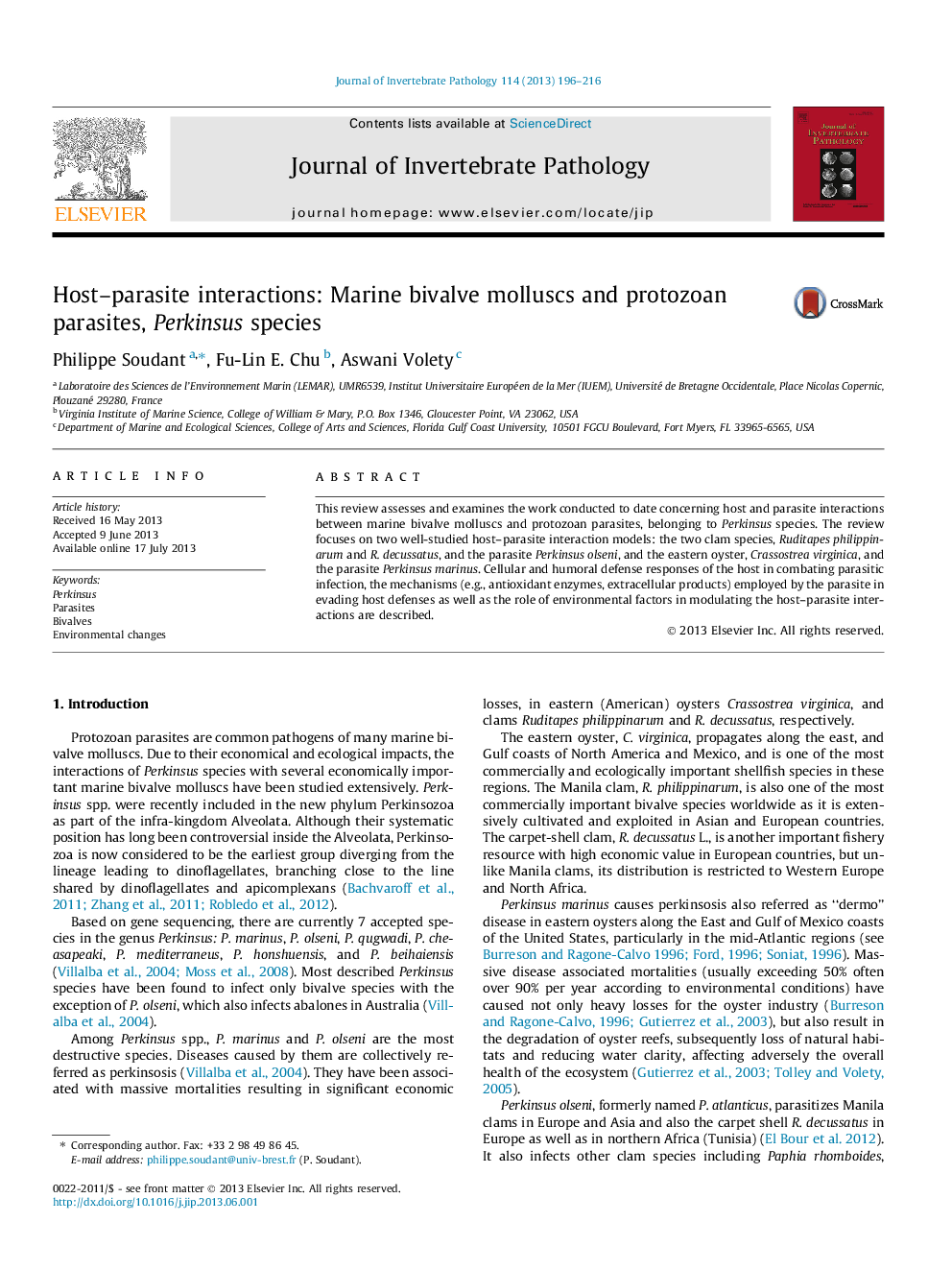| Article ID | Journal | Published Year | Pages | File Type |
|---|---|---|---|---|
| 4557789 | Journal of Invertebrate Pathology | 2013 | 21 Pages |
•Host defense mechanisms and humoral and cellular responses to Perkinsus spp. infection.•Perkinsus spp. metabolic biochemistry and virulence factors.•Physiological and immunological changes upon infection by Perkinsus spp.•Host–parasite interactions in variable and adverse environments.
This review assesses and examines the work conducted to date concerning host and parasite interactions between marine bivalve molluscs and protozoan parasites, belonging to Perkinsus species. The review focuses on two well-studied host–parasite interaction models: the two clam species, Ruditapes philippinarum and R. decussatus, and the parasite Perkinsus olseni, and the eastern oyster, Crassostrea virginica, and the parasite Perkinsus marinus. Cellular and humoral defense responses of the host in combating parasitic infection, the mechanisms (e.g., antioxidant enzymes, extracellular products) employed by the parasite in evading host defenses as well as the role of environmental factors in modulating the host–parasite interactions are described.
Graphical abstractSchematic presentation of humoral and cellular responses involved in bivalve defense mechanisms upon infection by micro-organisms. Blue indicates steps of phagocytosis and encapsulation. Step 1: Chemotaxis, attraction and migration. Step 2: Recognition and attachment of invading micro-organisms. These two steps involve the presence and the synthesis of lectins. Step 3: Internalization of micro-organisms within a phagosome. Step 4: Destruction of the micro-organism by oxygen dependent and oxygen independent microbicidal activities. These four steps constitute phagocytosis. However at Step 3′ when hemocytes failed to phagocytose the micro-organisms (possibly because they are too big for internalization), they encapsulate them and destroy them externally (Step 4′) with lysosomal enzymatic and ROS activities. Green indicates the various humoral factors such as antimicrobial peptides, lysosomal hydrolysases, protease inhibitors that also contribute to eliminate pathogenic micro-organisms. Purple symbolizes the invading micro-organisms.Figure optionsDownload full-size imageDownload as PowerPoint slide
